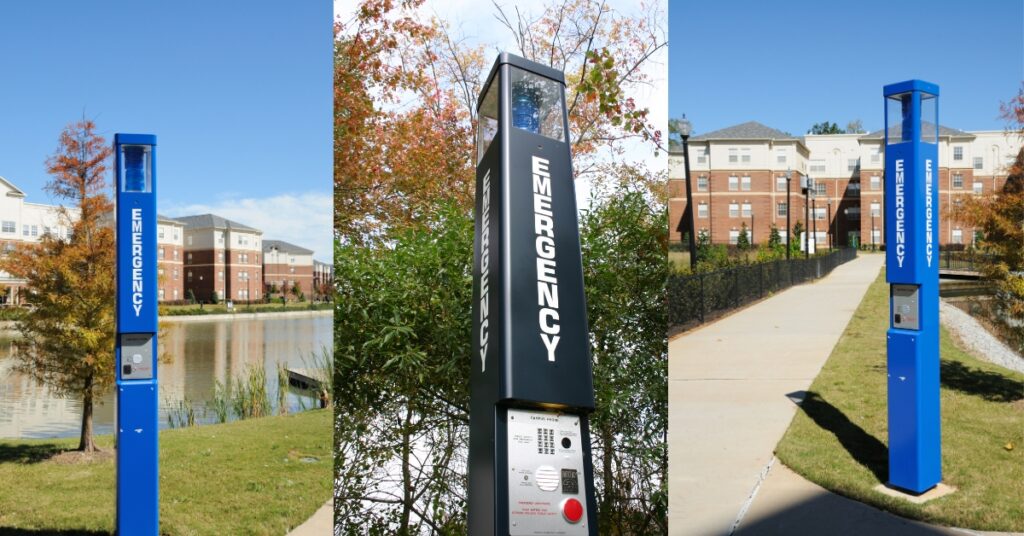Reduce Copper Wire Phone Costs and Keep Your Campus Safe

Table of Contents
Colleges and universities face a unique challenge: Figuring out how to plan for long-term growth, maintain a safe campus environment for students and staff, and reduce operational costs. One critical but often overlooked area that impacts all three is the phone infrastructure used to support life safety devices, such as blue light safety trail phones and emergency call boxes.
Many of these devices still rely on traditional copper landlines (POTS lines). While once considered the gold standard for reliability, these legacy systems are now expensive to maintain, complex to scale, and at risk of being discontinued altogether. Forward-thinking institutions are now looking at how to replace copper infrastructure with modern solutions that keep safety systems online while lowering costs.
The Challenge with Copper Landlines on Campus
Copper landlines transmit signals through a physical network of wires, which has been in place for decades. But as telecom companies move away from maintaining this infrastructure, colleges and universities are experiencing:
Skyrocketing service costs as fewer carriers support POTS lines.
Slower repair times due to reduced staffing and replacement parts availability.
Risk of service discontinuation as major telecom providers phase out copper service entirely.
For campuses that operate dozens, or even hundreds, of blue light safety phones, this creates a primary budget concern and a potential safety risk if the lines go down.
Modernizing Without Compromising Safety
The key to solving this problem is transitioning to a cellular POTS replacement solution. These systems replicate the analog connection required by blue light safety phones but transmit over cellular LTE or broadband networks. This allows campuses to keep using their existing safety devices while removing the dependency on copper wiring, with no need to replace infrastructure.
By making the switch to cellular, colleges can:
Eliminate excessive monthly POTS charges while maintaining full functionality for safety phones.
Improve reliability with built-in backup connections that ensure calls go through even if one network fails.
Simplify maintenance with centralized monitoring to track the status of each safety phone in real time.
Supporting Long-Term Campus Growth
As colleges expand with new buildings, parking areas, and walking trails, the cost of extending copper wiring to additional blue light phone locations can be prohibitive. A cellular POTS replacement solution removes that limitation entirely. Phones can be installed in more remote areas without costly trenching or wiring projects, making it easier to expand safety coverage as the campus grows.
Enhancing Safety While Reducing Costs
Blue light safety phones are a vital part of a campus’s emergency response system, providing a direct connection to campus security or 911. By replacing outdated copper lines with a modern cellular-based solution, schools can:
Maintain a reliable lifeline for emergencies.
Reduce long-term operational costs.
Ensure compliance with life safety regulations.
Future-proof the campus against ongoing telecom changes.
Make the Switch To Cellular POTS Replacement Today!
The reality is apparent: copper landlines are becoming too costly and unreliable to sustain. Colleges and universities that want to prioritize student safety, plan for campus expansion, and control operating expenses must consider transitioning to a cellular POTS replacement. This technology ensures blue light safety phones remain active, reliable, and ready for any emergency, without the mounting costs of outdated infrastructure.
Ready to make the switch? Contact us today to get started.
